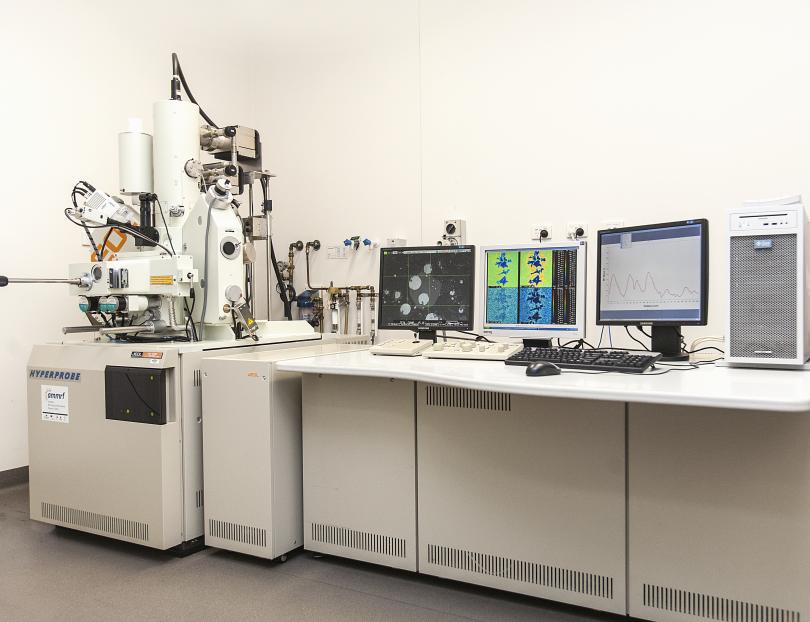
The JEOL JXA-8500F is a powerful microanalytical instrument that provides area-specific quantitative elemental results down to the sub-micron level. The electron probe microanalyser (EPMA) is fitted with four wavelength dispersive spectrometers (WDS) and a JEOL silicon drift detector energy dispersive spectrometer (SDD-EDS), giving this instrument the capability to detect and measure the concentration of most elements in the periodic table Z=4), with detection limits often better than <0.05%. In addition to its conventional microprobe capabilities, the instrument’s Schottky field-emission gun allows non-conventional low-kV work to be undertaken while maintaining a stable, highly-focused, high current (up to >100nA) beam.
Quantitative analysis may be carried out on the bulk matrix of micro-sampled materials as well as on phases, inclusions, grain boundaries or precipitates in a matrix. Examples of materials analysed using the JXA-8500F include geological specimens, fuel cells, implantable bionics, archaeological artefacts, metals/alloys and glasses.
Sample holders are available that accommodate 26mm (1") diameter resin-mounted specimens and petrographic thin sections/wafers. Samples need to be dry, flat, conductive and vacuum-stable for EPMA analysis. Usually, small pieces of an item are embedded in resin or mounted on a glass slide, polished to a mirror finish and then coated with a layer of carbon for conductivity.
This instrument was funded through the NCRIS program and is available to researchers nationwide via the AMMRF network (www.ammrf.org.au). For more information about instrument capabilities, access, and for specimen preparation advice, please contact Karen Privat.






